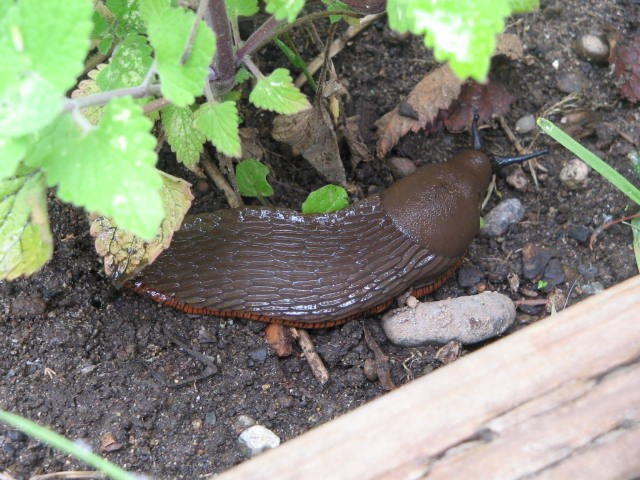Q: I recently bought some primulas and I was wondering what I can use to deter pesky snails, slugs, insects, etc. from feasting on them without having to use insecticides.
K, Coquitlam
A: Deterrents are fairly specific to different pests. If you have a very heavy infestation of slugs and snails, the easiest and most effective method is a slug bait containing ferrous iron. Slugs eat it and later die. Ferrous iron is found naturally in soils, but in relatively low concentrations.
Alternative methods include sticky copper tape fastened around bottomless plastic containers or other barriers. Slugs and snails don’t cross copper. Other forms include copper mesh.
If you have only a few slugs or snails a couple of Slug Saloons containing beer will attract the slugs or snails so intensely they fall into it and drown. Check them every day. Cleaning out the bodies gets nasty if you leave them a few days.
Very strong-smelling plants repel slugs and snails. This includes the Artemisia family, the mint family and sage. Also hand-picking works if you keep at it a little every day, especially if you go out with a flashlight at night on slug patrol.
But the worst time for a pest attack is usually just after something has been transplanted. The plant is under stress while it tries to put out roots and get used to its new situation. Later, plants develop more resistance and the leaves start to toughen up.
The worst pest for primulas isn’t slugs and snails, it’s vine weevils. They eat notches in leaf edges and the larvae destroy roots. They like to hide near their chosen plant in daytime. If you put folded newspaper nearby, the weevils are likely to hide inside. They don’t fly. They just walk very slowly so they’re easy to catch.
An alternative control is watering the area with nematodes. The initial nematode package is placed in a small quantity of water to make a concentrate. This is then further diluted with more water and sprinkled over the soil.
This has to be done about the third week of July, while the larvae is still close to the soil’s surface. Nematodes are tiny living worms that have to be used quite soon after being bought. If you’ve bought any primulas with notches in the sides of the leaves, it would be best to check the leaf ball in case fat white larvae with brown heads are lurking inside. These are immature weevils.
Q: I was informed by my neighbour that egg shells are good for the garden, so I have been keeping them. Is the membrane inside of the shell okay or shall I peel it off? Large pieces or small?
Ellen Trelenberg, Port Coquitlam
A: Eggshells provide calcium and it’s fine to leave the membrane inside the shell just as it is. Once the eggshells are dry, you have two options to prepare them for spreading or digging around the plants.
The quickest way is to put them in an old blender and grind them into a powder. This gets the calcium into the soil right away in a form the plants can use soon. The second is to store the eggshells in an old bowl/saucepan and crunch them up with a potato masher. It takes a while for eggshells flakes to break down in the garden, but meanwhile they give the soil a nice, loose texture.



